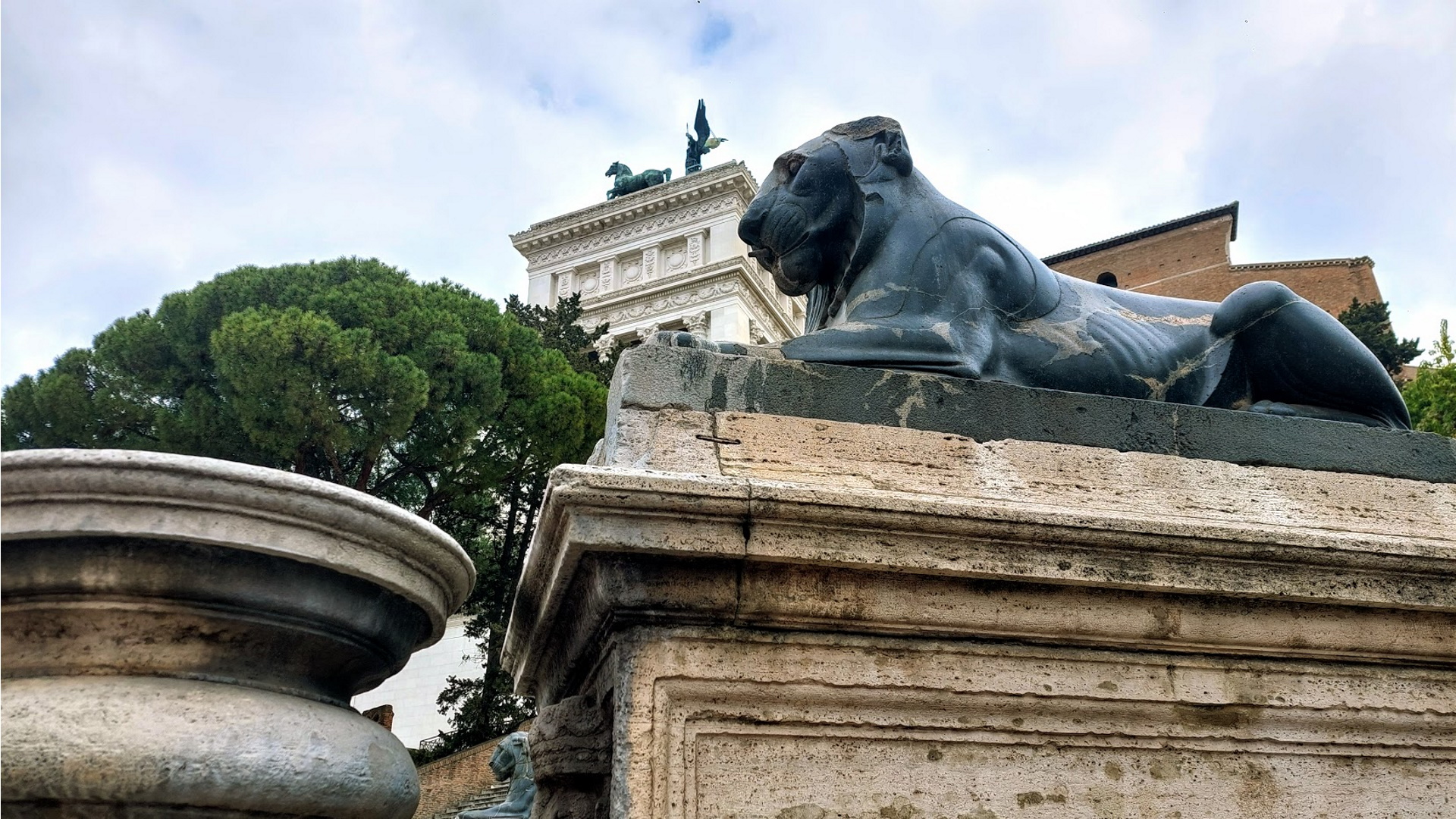
Arranged symmetrically at its base, two black basalt Egyptian lions have for centuries guarded the access to Michelangelo’s famous Cordonata ramp leading up from Via del Teatro di Marcello to Piazza del Campidoglio.
Like other sculptures that can still be encountered today among the city’s streets and museums, for example the so-called Madama Lucrezia and the famous Piè di Marmo, the two lions most likely came from the most important Egyptian shrine in Rome, the so-called Iseum Campense. This was a rich temple dedicated to Isis and Serapis and built in the first century B.C., later renovated in grandiose forms by Domitian and Alexander Severus between the 1st and 3rd centuries AD.
In the mid-14th century the lions still stood in front of the church of Santo Stefano del Cacco, built on part of the ruins of the Iseum. In 1562, Pius IV Medici donated them to the Roman people: they were thus transported to the Capitoline Hill and set up as ornaments at the bottom of the steps, on high plinths designed by Giacomo Della Porta. In 1587, when the Acqua Felice aqueduct was brought to the Capitoline hill, the sculptures were adapted into fountains with the addition of two basins to collect water, poured from spouts inserted into the mouths of the lions. Chronicles relate that on at least two occasions, in 1644 for the election of Pope Innocent X and in 1670 for that of Pope Clement X, white and red wine poured from the spouts of the fountains instead of water, “with great solace to the people”.
At the end of the 19th century, the lions were moved inside the Capitoline Museums and replaced by copies made of white marble. They returned to their place in 1956 while the 16th-century chalices, which were missing at the time of removal, were replaced by copies made imitating the lost originals.
The Egyptian culture in Rome
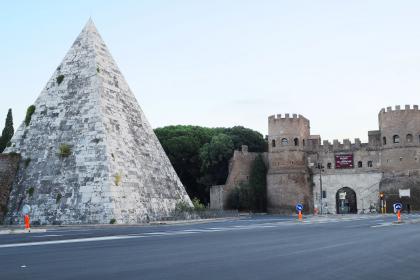
 Condividi
Condividi
The Capitoline Hill: a place of legends
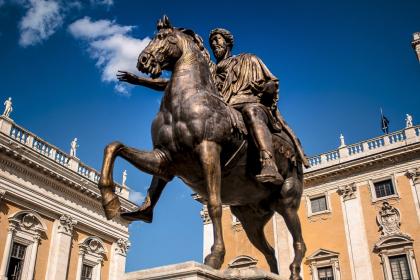
The Fountain of Dea Roma in Piazza del Campidoglio
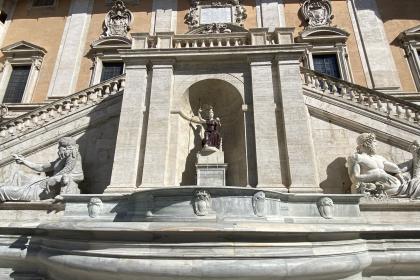
 Condividi
Condividi
The urban zoo: seven streets named after animals
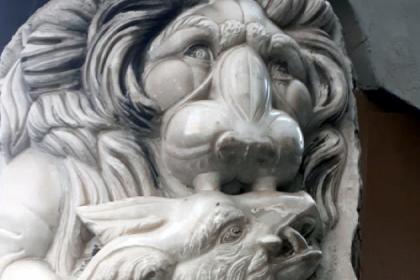
Bears, lions, monkeys and many more giving their name to the streets of Rome
Information
 Condividi
Condividi
Location
To find out about all accessibility services, visit the Rome accessible section.











































